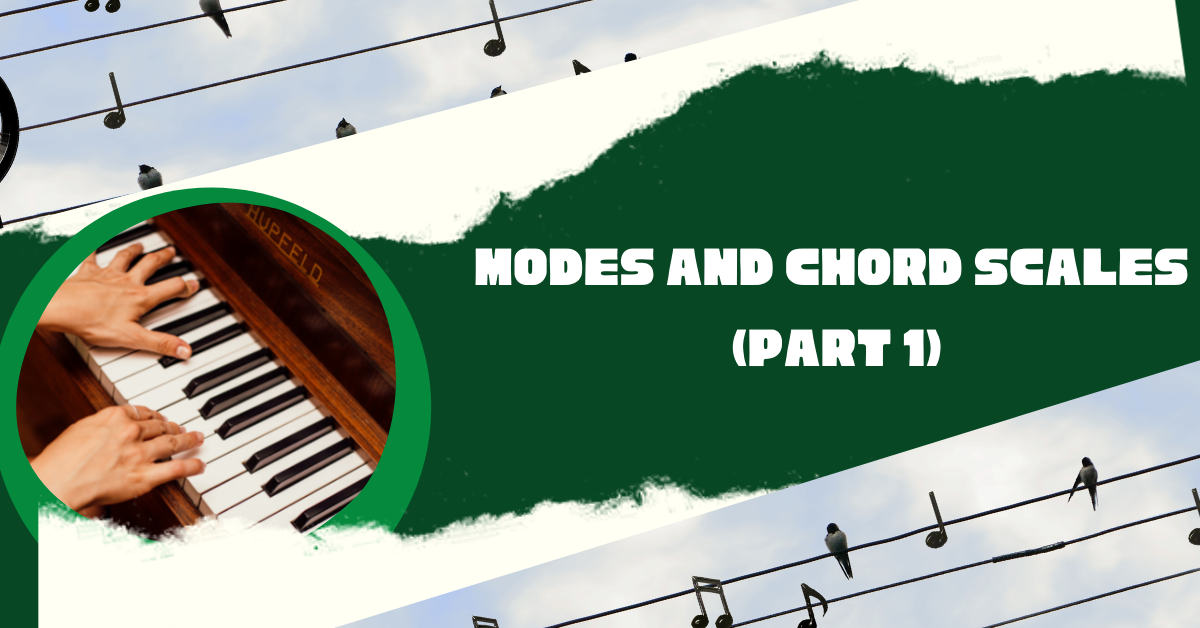Modes and Chord Scales (Part 1)

Probably the most common question I get regarding theory comes from students who want to understand modes and chord scales. This information is very important to jazz players because of the nature of improvisation, a central aspect of jazz playing. Most beginner (and even intermediate and advanced) jazz players are accustomed to asking themselves "What scale or scales can I play over these chords?" Other musicians, such as classical players, arrangers, composers, and orchestrators, want to make sense of what they are playing, how the music was constructed, or what a composer was thinking. It is also must-know information if you enjoy breaking down and analyzing music to better understand how it was constructed or if you're looking for ideas as to how to write music.
In this article we're going to discuss the modes of the major scale and focus on identifying each mode. This is a crucial first step to understanding chord scales and being able to make sense of modal language and terminology. Let's jump in.
Below is a G major scale. We are going to call each individual note of the scale a "degree of the scale" and label them 1, 2, 3, etc., (i.e., scale degree 1, scale degree 2, scale degree 3, etc.) in their order of appearance when playing up the scale. So scale degree 1 is 'G,' scale degree 4 is 'C,' scale degree 7 is 'F#,' etc.
Now, what if we play this same scale again, but rather than start on 'G,' what if we started on 'A'? We are not going to change any of the notes, only the order of the notes, meaning we are going to use all of the same notes found in the G major scale, but simply play those notes by starting on an 'A.' We are going to treat 'A' as the root of this new scale. What would this new scale (below) be called?
Notice that the scale above uses all of the same notes from G major, but treats 'A' as the root of the scale. We have just built a new scale on the 2nd degree ('A') of a major scale (G major scale). This new scale is referred to as the dorian scale, or dorian mode. We can build a scale on each degree of the major scale and the resulting mode will be as follows:
Starting on the 1st scale degree = ionian (this is the same as the major scale itself);
Starting on the 2nd scale degree = dorian (a minor mode);
Starting on the 3rd scale degree = phrygian (a minor mode);
Starting on the 4th scale degree = lydian (a major mode);
Starting on the 5th scale degree = mixolydian (a major, or dominant, mode);
Starting on the 6th scale degree = aeolian (a minor mode, and this is the same as the natural minor scale);
Starting on the 7th scale degree = locrian (a minor mode).
It is important to practice this information in order to get more familiar with it. Here are some practice suggestions:
- Write out all the modes in 4-6 different keys;
- Practice playing through one particular mode in all 12 keys (i.e., dorian mode in all 12 keys);
- Practice playing through all 7 modes in one particular key (i.e., ionian, dorian, phrygian, etc., all in the key of F major).
In Part 2, we'll discuss how to apply this information to a set of chord changes and discuss the relationship between modes and chord scales.

